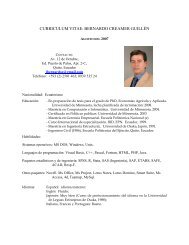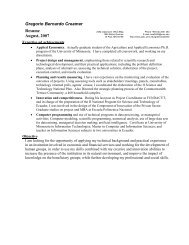Water-Quality Trading: Can We Get the Price of Pollution Right?
Water-Quality Trading: Can We Get the Price of Pollution Right?
Water-Quality Trading: Can We Get the Price of Pollution Right?
You also want an ePaper? Increase the reach of your titles
YUMPU automatically turns print PDFs into web optimized ePapers that Google loves.
Figure 3: Total supply <strong>of</strong> permits and relative performance <strong>of</strong> TRS and DTRSefficient trades while <strong>the</strong> DTRS promotes inefficient trades. These results indicate, in this sense, <strong>the</strong>impossibility <strong>of</strong> getting <strong>the</strong> spatially explicit prices <strong>of</strong> pollution right under ei<strong>the</strong>r system. However,our computational results do indicate <strong>the</strong> possibility that <strong>the</strong> two systems may still approximate<strong>the</strong> socially efficient optimum sufficiently closely if <strong>the</strong> total allowable permits are set initially atlevels sufficiently close to <strong>the</strong> optimum. The (maximum) efficiency loss due to mis-specifying <strong>the</strong>total supply <strong>of</strong> permits was much larger than that from mis-specifying <strong>the</strong> spatial prices <strong>of</strong> permits.Interestingly, <strong>the</strong> magnitude <strong>of</strong> inefficiency due to incorrect signals may also depend on <strong>the</strong> totalsupply <strong>of</strong> permits. Thus our paper suggests <strong>the</strong> importance <strong>of</strong> getting <strong>the</strong> quantity <strong>of</strong> pollutionright even while striving to get <strong>the</strong> spatial prices <strong>of</strong> pollution right.Though we kept <strong>the</strong> assumptions <strong>of</strong> our model as general as possible with respect to waterpollution and watershed characteristics, like Hung and Shaw and also Farrow et al. we ignored <strong>the</strong>problem <strong>of</strong> nonpoint-source pollution (NSP). Nonpoint sources can <strong>of</strong> course play an importantrole in a watershed. It is usually difficult and costly to identify and monitor <strong>the</strong> level <strong>of</strong> NPSpollution-causing activity (or discharge levels), because land-use practices (for example, fertilizerapplication) or land use itself (for example, buildings and parking lots) are <strong>the</strong> major sources<strong>of</strong> such pollution. If <strong>the</strong> discharge from each source is difficult to identify, nei<strong>the</strong>r trading nordirect control would achieve <strong>the</strong> efficient outcome. However, in recent years substantial efforts havebeen devoted to transforming nonpoint sources into point sources. Scientists <strong>of</strong> various disciplinescontinue to improve <strong>the</strong>ir ability to identify and monitor pollution levels from nonpoint sources.As our understanding <strong>of</strong> NPS improves, <strong>the</strong> present study could have important implications for<strong>the</strong> optimal management <strong>of</strong> nonpoint-source pollution.In <strong>the</strong> case <strong>of</strong> nonpoint pollution, <strong>the</strong> business <strong>of</strong> getting <strong>the</strong> spatial prices <strong>of</strong> pollution rightbecomes even more difficult for two reasons. First, because water pollution can travel through mul-21



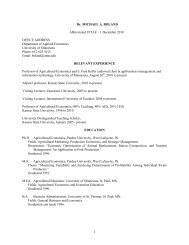
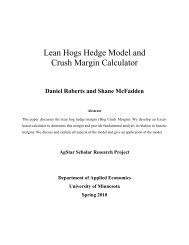
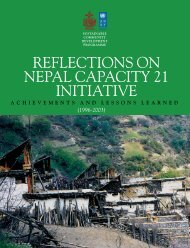
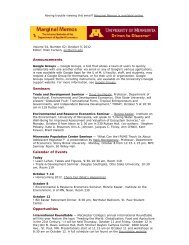

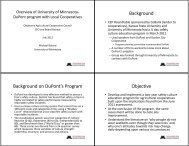
![Publications Since 2000[1].docx](https://img.yumpu.com/30237513/1/190x245/publications-since-20001docx.jpg?quality=85)

